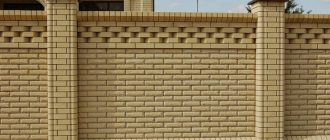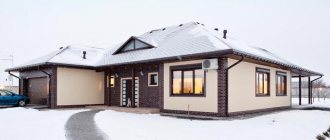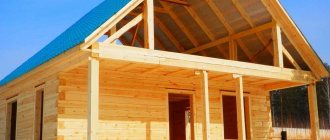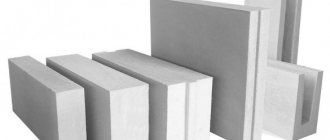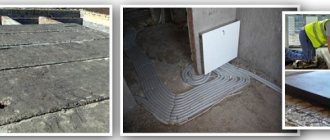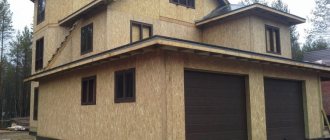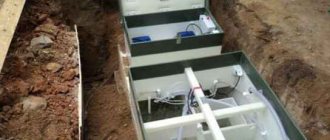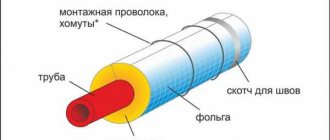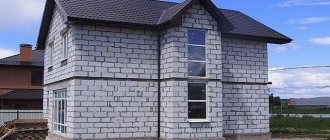Home |Construction |Is it possible to build a house in winter?
Date: November 14, 2017
Comments: 0
Construction of a private house is a complex process, the duration of which depends on many factors. It is not always possible to finish construction that begins in the spring before the onset of cold weather. Many developers are interested in whether it is possible to build a house in winter. They do not want to prolong the completion of work and at the same time they are afraid of making a mistake. Thanks to modern technologies, it is possible to build buildings all year round.
Construction in winter - general specifics of work
Crystallization of water entering concrete is a major problem during winter construction. Without the use of modern methods of heating concrete and the use of modifiers, increased moisture in volume can damage the integrity of the concrete mass.
Regardless of whether brick blocks are used to build a house or concrete is used, the following conditions must be met:
- adhere to technological recommendations for performing work in cold weather;
- provide a thermally insulated room for construction personnel;
- provide a level of illumination that allows you to work after dark.
Despite the seasonal nature of construction work, winter is not an insurmountable obstacle to its implementation
The general algorithm for constructing a building in cold weather, regardless of the materials used, includes the following stages:
- obtaining permits. The issuance of a construction certificate is in no way related to the time of year. You just need to develop the project in a timely manner and submit the necessary documents for registration;
- acquisition and delivery of necessary materials to the site. Costs will be significantly lower due to seasonal discounts. Transporting materials in winter can be much easier, since muddy roads will not interfere with vehicle access;
- carrying out excavation work related to the arrangement of the foundation. Negative temperatures make working on loose soils easier. The use of concrete with additives allows you to pour the foundation at temperatures down to -20 ⁰С;
- construction of main walls and roof construction. When constructing load-bearing walls and partitions, a heated solution or concrete composition with the addition of plasticizers is used. In wooden beams used in frosty weather to build a roof, the moisture concentration is reduced as much as possible;
- implementation of roofing activities and finishing. Not all roofing and finishing materials allow their use at subzero temperatures. To carry out work in winter, you should choose the right materials.
Modern methods can be used to use concrete at low temperatures:
- introduce additives into the concrete mixture that increase the frost resistance of the composition. This will allow construction activities to be carried out at low temperatures;
- heat the concrete during its preparation stage. After pouring, the solution must be insulated so that it hardens completely before the water freezes;
The main part of the problems associated with winter construction is caused by the property of water to freeze at temperatures below zero degrees.
- perform electrode heating by passing current through steel electrodes. The supply voltage is supplied from a step-down transformer;
- use sources of infrared radiation. They allow you to perform directed heating of the mass, as well as increase the temperature of the concrete through the formwork;
- use a heating cable. It is laid in loops with an equal interval between turns before concreting begins, and heats up the concrete solution when voltage is applied;
- install heating formwork. It consists of standard sections that are equipped with electric heaters and are easily combined into a single structure.
Using these methods, it is possible to ensure the required conditions of the concrete solution.
General rules for winter construction - do's and don'ts
Of course, they build in winter, and even in certain moments this turns into advantages for the developer. This chapter will discuss all the pros and cons in detail.
All moisture processes stop
Advantages of construction in winter
Let's start with the positive:
| Dignity: | Description: |
You can save a lot of money by building a house in winter | The most important point in favor of winter work is the price level for building materials and labor. Due to the fact that the volume of orders from sellers and builders falls during the off-season, they begin to reduce their prices in order to provide themselves with at least some work and generate income for themselves. Construction crews work slowly, performing the assigned task efficiently - there will be no need for them to jump from site to site. For the same reasons, you can save a lot of money on drawing up a project - discounts can reach 50-60% (read more in the article about prices for private house projects). |
Storage of building materials | If there is severe frost outside, then it is easier to store many materials on the construction site. The lack of humidity has a beneficial effect on their preservation - it is enough to cover everything with film to prevent snow from getting in, and sometimes this is not necessary. |
Indirect advantages include cleanliness on the site - cars will not spoil the landscape of the site with their wheels. Due to the blurred roads in summer, it is difficult to access remote areas; this should not happen in winter, when all the dirt freezes.
Disadvantages of construction in winter
The disadvantages of winter construction include:
- The construction team will need to build a heated winter shed, which will increase costs. It will be heated throughout the working day, since the workers need to warm up quickly, otherwise in a couple of days the entire team will come down with colds.
- The daylight hours are significantly reduced - frosts intensify in the evening, workers cannot work when it starts to get dark. Therefore, they either install additional powerful lighting or significantly reduce the shift, delaying the entire process.
- During severe frosts, work with some materials cannot be done; for example, mixing and pouring concrete is accompanied by the risk of freezing, which significantly reduces the strength of the material; wood may crack when sawing.
- It is very difficult to carry out excavation work. During this season, it is generally recommended to avoid them. The reason is not so much that frozen ground is difficult to develop, but that during thawing in the spring it can lead to uneven shrinkage of the structure, which will affect the integrity of the walls and interior decoration. In rare situations, even a building collapse may occur for this reason, so you need to take into account all the standards and follow the project exactly.
Construction of a frame house in winter - It is also better not to carry out finishing work in winter, since “wet” materials need above-zero temperatures, and heating rooms with heat guns can be expensive, so they try to resolve all issues related to finishing in the spring.
- It is even more difficult to finish the facade with wet mixtures - even despite the addition of special additives, the quality of the solutions will suffer. The service life of the plaster will be significantly reduced.
- For normal hardening of concrete, in addition to adding additives, it is heated with electric mats and special wires. This, again, indicates increased energy costs.
Winter construction - pros and cons
Carrying out concrete measures in winter, you can appreciate the following advantages:
- preservation of the landscape of the site. At low temperatures, it will not be damaged by moving construction equipment over frozen soil;
- ease of delivery of building materials. Durable and dry road surface and the absence of mud make it possible to expedite transportation;
- significant savings. The cost of building materials in winter is significantly lower than at other times;
- reduction of work duration. Building the box in winter will allow you to quickly begin finishing with the onset of spring.
The construction of residential buildings has a number of specific requirements that prohibit certain types of construction work in winter
Along with the advantages, there are weaknesses:
- additional costs associated with the use of plasticizers and increased energy consumption;
- the need to use professional equipment for warming up and attract specialists;
- shortened daylight hours and unfavorable weather conditions, negatively affecting the pace of work.
Using specific examples, we will consider the possibility of using various materials at low temperatures.
Construction of walls and ceilings in autumn and winter
In principle, with certain reservations, you can build a house from almost anything in winter. We will consider the material that we talk about everywhere and constantly - aerated concrete.
To understand why we love aerated concrete so much, just read our article about comparing relatively cheap options for building a house: How to build a turnkey house inexpensively so that you don’t have to quarter the builders later?
Building a house from aerated concrete blocks is a matter that requires a high-quality approach. If for some reason you did not manage to complete the construction of a house made of aerated concrete before the period of rain or severe cold, then you have two options for the development of events: conservation or the use of “winter” materials.
In general, construction from aerated concrete blocks can be carried out at temperatures not lower than 15 degrees. To build walls, you will need special “winter” glue or polyurethane foam glue.
But not everyone will want to do masonry in the cold. Short daylight hours are not conducive to hard work. You can temporarily curtail the construction site by mothballing it. To do this, we will need to protect the aerated concrete blocks from atmospheric influences, otherwise the unfinished structure may collapse over the winter from constant wetting. After all, as you know, water at low temperatures tends to turn into ice and expand.
Therefore, if the walls have already been erected, but there is no roof yet, the following work will need to be carried out:
- Make a reinforced belt of U-shaped blocks over the walls and fill it with cement-sand mortar. We pay attention to the reinforcement above window and door openings.
- Waterproof the reinforced belt using roofing felt.
- If there is no reinforced belt outside the walls, then the walls must be strengthened with spacers. This is especially important if the height of the walls is more than 3 meters.
- To protect the building from rain and snow getting inside, it is necessary to install a temporary roof. Its overhangs beyond the walls must be at least 50 centimeters.
- Cover the roof gables with plywood, roofing felt or boards. In order for our house to breathe, it is necessary to ensure ventilation of the under-roof space, leaving slot gaps.
- Cover the floors with straw mats or waterproofing materials with an overlap of at least 30 centimeters on the walls. This way we will protect them from getting wet. Door and window openings must be wrapped with film or any other covering material to prevent water from flowing into them. The film must be secured with bricks, which will protect the film from breaking.
- The outside walls need not be covered with anything. To protect the foundation from water flowing from the roof, it is necessary to make a blind area.
- To prevent water from accumulating near the foundation and frame of the building, it is necessary to consider a system for draining groundwater from the facility by drawing grooves on the site.
If the walls, ceilings and rafter system are erected, then the following actions are necessary:
- Overlapping pieces of roofing felt or polyethylene should be placed on the ceiling. Tape the joints between them with tape. To prevent the polyethylene from being blown away by the wind, bricks must be placed on top. The edges of the film should extend 30 centimeters onto the walls so that water that accidentally gets inside the house does not spread onto the walls, but remains on the film.
- Cover the roof with temporary decking. Roll insulation or under-roof membrane is overlapped.
- Materials must be strengthened using fasteners, wooden slats, plastic or metal tapes.
After we have put winter clothes on our house, it is necessary to completely close access to the facility. To do this you need:
- Completely cut off power to the building.
- Board up window and door openings. First we use a transparent film, and then we attach wooden boards, sheets of plywood or roofing felt to the aerated concrete using nails or self-tapping screws.
- If the object is preserved for a long time, then treat the walls with antifungal compounds. Antifungal agents may not be used if the preservation period is short, for example, until spring. Microorganisms practically do not reproduce in cold weather.
- For additional protection, install a temporary fence. This is an additional expense, but we don’t want uninvited guests to visit our dream home.
How to save unused aerated concrete blocks?
It is advisable to store the blocks in their original packaging. If it is broken, then the blocks must be covered with a durable film on top. The pallet cannot be completely closed, otherwise moisture will appear inside the package, and aerated concrete must freely give and receive moisture so that during a sudden cold snap the blocks do not crack.
Pallets with blocks must be placed on a flat surface. The best way to store pallets with gas blocks during the cold season is to store them in flood-proof areas and under a canopy.
Is it possible to build a house from foam blocks in winter?
Foam blocks are a type of porous concrete. They are characterized by increased performance characteristics: heat-saving properties, high sound insulation, and do not shrink. However, foam blocks have increased water absorption, to prevent which it is necessary to protect the surface.
In winter, you can lay foam blocks. It is important to consider the following points:
- use a solution or glue with frost-resistant characteristics;
- erect a tent-type frame-film structure over the masonry;
- protect the surface of the blocks from moisture using external cladding.
These measures increase the construction budget.
Masonry blocks should not be damp or covered with snow
Is it possible to lay bricks in winter?
The properties of cement mortar affect the strength characteristics of brickwork, as well as for buildings made of foam blocks.
You can use brick for the construction of buildings in winter, observing the following requirements:
- Modifiers should be introduced to reduce the freezing threshold;
- it is necessary to thoroughly clean the brick from snow and ice;
- It is undesirable to use heating the mixture with boiling water, as the cement loses its properties.
Compliance with these recommendations will ensure the strength of brick buildings.
Is it possible to build a house from aerated concrete in winter?
Gas-filled blocks are used in the construction industry, however, they have weaknesses:
- hygroscopicity;
- fragility.
To the question “Is it possible to build with aerated concrete in winter,” the manufacturers of this universal building material unanimously give an affirmative answer
It is allowed to construct buildings from aerated blocks in winter, subject to the following recommendations:
- the material needs waterproofing, since the moisture in the gas block mass, when frozen, can damage the integrity of the block;
- when pouring a reinforced belt under the roof, it is necessary to use concrete with modifying additives;
- finishing of gas-block facades is mandatory, since the cellular material is afraid of dampness.
It is difficult to call aerated concrete a good material for construction in winter. However, if this is preferred, use high quality blocks and use a frost-resistant solution.
Building a house in winter using ceramic blocks
Ceramic blocks have the following properties:
- increased resistance to negative temperatures with subsequent thawing;
- high thermal insulation characteristics, thanks to which walls made of ceramic blocks do not require insulation.
To ensure the strength of winter masonry it is necessary:
- introduce plasticizers into cement mortar;
- use a special adhesive composition.
Despite the possibility of using frost-resistant mortars for masonry, manufacturers of ceramic blocks do not recommend laying them at low temperatures.
Winter laying of ceramic blocks has its place - and above all, for reasons of saving money and time
Working with the foundation
How feasible it will be for you to build in winter also depends on what type of foundation you choose for your home. If it is a shallow strip, and you use monolithic reinforced concrete as the material, then its installation can be carried out at any time. The depth of the ditches for such a foundation does not exceed 40 centimeters, even in winter it is quite possible to dig them with your own hands. If the house design involves the presence of a basement, then you will have to hire construction equipment to dig a buried foundation. Frosts are also no hindrance to this technique; it digs frozen ground even easier than heated ground.
If you want to build a foundation using SNIP technology, then the temperature regime in this case is of great importance. Such construction work is possible at temperatures not lower than five degrees below zero. If you still have to work at a lower temperature, you need to use one of the methods that helps the concrete harden. There are several such methods:
- Heating the concrete with the heat generated by the solution itself. To do this you need to use steam or hot water.
- Insulated formwork with a protective layer that creates a “thermos effect”.
- Warming up using electrodes or infrared sources.
- Adding special substances to concrete that influence its temperature and allow it to quickly harden.
The most inexpensive, and therefore the most popular, is the last method, which is also used by specialists. All these technologies not only allow you to work in winter, they guarantee that the foundation built in the cold season will be as strong and reliable as the one which was built in the summer. Despite the fact that the hardening of the foundation occurs a little artificially, this does not in any way affect its functional characteristics and the subsequent operation of the house.
If you decide to start building a house in winter, just carefully read all the technologies and consult with specialists. When working with the foundation, mistakes are unacceptable, since this is the basis of the entire house and the key to its reliability. If this is construction in winter, the technology must be followed with triple caution and attentiveness. After all, a mistake can lead to the building being skewed when groundwater rises. If the structure of the foundation is uneven, it may crumble within the first year of operation, and living in such a house will become unsafe.
Winter wood construction
The use of wood for work at sub-zero temperatures has many advantages:
- the material contains less moisture, which reduces the likelihood of rotting;
- frost-dried timber has increased strength and does not form cracks;
- wood is easier to process and retains its geometry.
It is important to protect wooden building materials on the construction site from moisture. This will ensure that its properties are preserved when performing work in winter.
Roofing work
Roofing installers must consider the following factors when performing their winter tasks:
- freezing;
- wind;
- snowfall;
- short day.
These factors increase the amount of preparatory and auxiliary work. We have to remove the snow and dry the material. Such work reduces labor productivity in winter. Therefore, when starting construction in winter , consider the option of covering the roof, which will protect it from precipitation. This will slightly increase your financial costs, but the roof will be built in accordance with the technology and will be durable and reliable.
To build a reliable roof in winter, you also need to carefully select the material for it. Not all options are frost-resistant. In this case, it is good to use polymer-bitumen roofing material. It is glued to the sheathing after the bottom layer has been melted a little. This must be done carefully, since such material loses its qualities if it is melted more than necessary. At sub-zero temperatures, it is extremely difficult to keep track of this, so it is better to prepare such material in a warm room, and you can already install it at a cold temperature.
To install the roof, you can also use special roofing mastics that can perfectly waterproof surfaces without losing their adhesive properties. The best material for constructing a roof in the cold is considered to be a polymer roofing membrane. It is durable regardless of the temperature conditions at which it is installed. Every day more and more new roofing materials suitable for winter construction appear on the construction market. When starting your construction, check out all the options and choose the one that suits you best in terms of price and method of use.
Is it allowed to build a house from sip panels in winter?
The construction of buildings from sip panels involves the construction of a wooden frame and the attachment of particle boards to it. There are no wet technologies, there is no need to use plaster and cement, and there is no need to build a strong foundation.
When performing work in cold weather, pay attention to the following points:
- the use of polyurethane foam intended for cold conditions;
- moisture content of wood for the frame, which should not exceed 30%.
A special feature of buildings made from sip panels is the absence of shrinkage. This allows finishing activities to be carried out immediately after construction is completed. Winter activities will allow you to complete the work in the spring and move into your new home by summer!

